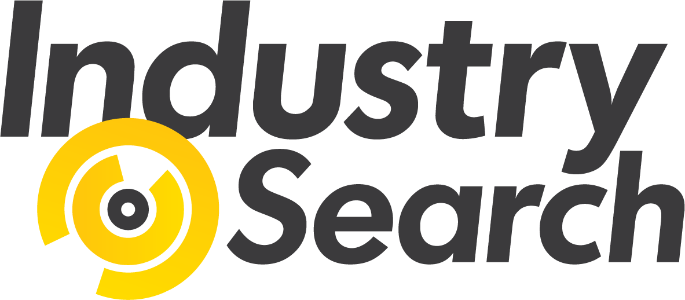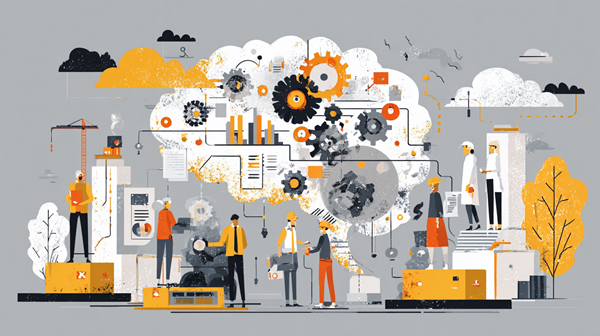Key takeaways
- Understand behaviour: Recognising biases like social proof and anchoring helps you make more rational decisions under pressure.
- Design decisions: Use framing, nudging, and loss aversion principles to influence outcomes ethically in operations, sales, and leadership.
- Work within limits: Acknowledge your circle of competence and use inversion thinking to avoid costly mistakes.
- Build better systems: Small tweaks to processes or incentives can improve safety, efficiency, and motivation across teams.
- Think long-term: Great decision-makers like Charlie Munger and Daniel Kahneman use these models to reduce error and strengthen judgment, you can too.
Why understanding human thinking matters
In industries built on precision, manufacturing, logistics, mining, and engineering, decisions are often shaped by emotion, habit, and bias rather than data alone.
- Expert insight: Nobel laureate Daniel Kahneman highlights the influence of human thinking systems on judgment.
- Munger’s advice: “To make better decisions, you must understand how humans really think, not how we wish they did.”
- Australian relevance: Understanding behavioural economics helps you hire smarter, negotiate better, manage risk, and design safer, more productive workplaces.
1. Decision-making under uncertainty
Prospect theory and loss aversion
- Why it matters: People fear losses about twice as much as they value equivalent gains; procurement teams often delay decisions due to fear of overpaying or making the wrong choice.
- How to apply it: Frame decisions around potential loss (“delaying could cost an extra 10%”) rather than gain (“you’ll save 10%”).
- Example: During 2023 supply chain shortages, Australian manufacturers who locked in contracts early avoided steep price increases.
Anchoring effect
- Why it matters: The first number or idea you see heavily skews judgment.
- How to apply it: Set the first anchor in negotiations or pricing to influence expectations.
- Example: A supplier quotes $300/unit; even if fair value is $200, counteroffers often remain near the anchor.
Margin of safety
- Why it matters: Future uncertainty demands buffers to prevent costly mistakes.
- How to apply it: Always build time, budget, or capacity buffers into plans.
- Example: Construction projects with a 10% budget buffer avoid overruns; ABS (2024) reports 62% of projects face cost increases.
2. Influence and team behaviour
Social proof
- Why it matters: People look to others when unsure; visible positive behaviours encourage compliance.
- How to apply it: Highlight achievements, testimonials, or best practices to set norms.
- Example: Rio Tinto’s “Safety Leadership Moments” program shares safety learnings, fostering accountability.
Motivation crowding
- Why it matters: External rewards can reduce intrinsic motivation and innovation.
- How to apply it: Balance financial incentives with autonomy, mastery, and purpose.
- Example: A Queensland manufacturer replaced output-based bonuses with team-led improvement goals; downtime dropped 8% and satisfaction rose.
Social learning theory
- Why it matters: People imitate what leaders model, not just what they say.
- How to apply it: Demonstrate desired behaviours visibly.
- Example: A maintenance manager publicly thanking staff for reporting faults encourages others to prioritise safety over speed.
3. Rational limits and thinking systems
Bounded rationality
- Why it matters: Humans make “good enough” decisions rather than perfect ones.
- How to apply it: Reduce choice complexity and decision fatigue for yourself and your teams.
- Example: Standardised supplier lists and maintenance protocols increase speed and consistency.
Dual-process theory
- Why it matters: System 1 (fast, intuitive) vs System 2 (slow, deliberate) thinking explains common errors.
- How to apply it: Automate routine tasks, but schedule reflection for strategic decisions.
- Example: Major capital purchases should include a “cooling-off” review period with cross-department input.
Circle of competence
- Why it matters: Expertise is only effective within your knowledge boundaries.
- How to apply it: Consult experts when venturing outside your circle.
- Example: Plant managers shouldn’t approve AI procurement tools without IT or finance input.
4. Designing better environments
Smart decision-makers don’t just react; they design systems that make good choices easy and bad ones harder.
Nudge theory
- Why it matters: People follow the path of least resistance; structuring choices improves outcomes.
- How to apply it: Build defaults that guide desired behaviour without coercion.
- Example: Default safety gear in every new employee starter pack increases compliance.
- Australian insight: BETA used nudging to improve safety and compliance outcomes across industries.
Framing effect
- Why it matters: Presentation of information shapes perception and action.
- How to apply it: Frame metrics and communications to highlight success and progress.
- Example: “95% on-time deliveries” feels more reassuring than “5% delays.”
- Tip: Review messaging for clarity and positive framing in reports, sales decks, and internal communication.
Inversion thinking
- Why it matters: Prevents costly reactive problem-solving by focusing on potential failures.
- How to apply it: Identify how a project or process could fail and implement safeguards.
- Example: Australian SMEs prevent downtime by listing supplier delays, quality issues, or skill gaps before rollout.
- Industry insight: Inversion makes prevention a core part of planning and strengthens resilience.
Applying behavioural insight in Australian industry
- Policy impact: The Australian Government’s BETA team has successfully used nudges to improve workplace safety and compliance.
- Industrial impact: McKinsey Australia (2024) found behavioural design in safety training reduced incidents by up to 30%.
- Procurement impact: PwC reports behavioural insights improved supplier engagement and reduced decision delays by 15–25%.
- Practical takeaway: Thinking smarter, not faster, can enhance tender evaluations, workforce engagement, and overall operational efficiency.
Behavioural thinking application cheat sheet
A practical checklist to ensure you’re applying human decision-making principles in what you do
Clarity & framing
- Is the problem framed to show benefits and risks clearly?
- Could it be more gain-focused or loss-avoiding?
- Have I avoided accidental negative framing (e.g., “10% failure” vs “90% success”)?
Anchoring & expectations
- Am I setting the first reference point (price, expectation, number) or letting someone else?
- Are there unintended anchors biasing perception (an inflated “original price” or old benchmark)?
Social proof & modelling
- Have I made it visible that others are already doing or trusting this?
- Am I using testimonials or stats for legitimate validation?
- What behaviours are people actually modelling in my team?
Communication & simplicity (bounded rationality)
- Have I removed unnecessary complexity so decisions are quick and confident?
- Is there a clear next step or default that makes action easy?
- Are we designing for how people actually think, not perfect rationality?
Inversion & failure checks
- Have I asked, “What would make this fail?” before committing?
- Have I listed the top three failure modes and designed safeguards?
- Am I learning as much from mistakes as from successes?
Circle of competence
- Am I operating within my true area of understanding?
- Who should I consult who has deeper competence?
- Do I know where my knowledge edge ends?
Margin of safety
- Have I built enough buffer (time, budget, capacity) for the unexpected?
- If everything took 20% longer or cost 20% more, would this still hold?
- Would I make the same decision if conditions worsened tomorrow?
Motivation & incentives
- Are incentives (financial or emotional) aligned with desired behaviour?
- Could external rewards be crowding out intrinsic motivation?
- Do incentives avoid encouraging gaming or short-termism?
Mental accounting & resource use
- Am I treating resources as fungible, or stuck in mental “buckets”?
- Would this decision make sense if the money came from another budget?
- Am I using windfalls and savings rationally rather than emotionally?
System 1 vs System 2 thinking
- Is this decision being made too fast (System 1) when it needs slow thought (System 2)?
- Have I paused or “slept on it” for major choices?
- Am I overthinking something that should be instinctive?
Choice architecture & nudging
- Have I designed the environment so the best choice is the easiest?
- Are defaults aligned with the desired outcome (opt-in vs opt-out)?
- Am I nudging ethically to help people long term?
Emotion & gut feel (somatic markers)
- What emotions or bodily sensations arise when I consider this?
- Are those feelings based on past experience or misplaced fear/hope?
- Have I separated emotional noise from genuine instinct?
Lollapalooza check
- Are multiple biases or forces aligning to create overpowering momentum?
- Am I being swept along by social proof, incentives, and emotion?
- Is consensus a sign of truth or collective bias?
Learning & reflection
- What did I learn about actual behaviour versus expectations?
- Did I apply the right model, or should I update my latticework?
- What small experiment or tweak can I run next to test these ideas?
Final thought
Understanding how people think isn’t about eliminating bias, it’s about designing around it.
As Munger put it,
“Knowing what you don’t know is more useful than being brilliant.”
By applying these timeless behavioural principles, you can lead smarter, reduce costly errors, and build a culture where better judgment drives better results, every time.












